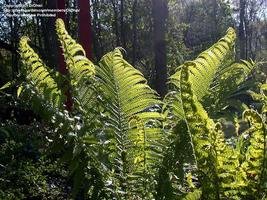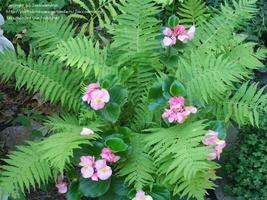





Fiddleheads, one of the first forest delicacies to emerge in the spring. As soon as we started thinking Mothers Day, Dad would pile us kids into his truck and we would scan our favourite swamps, looking for signs of the newly emerging fronds.
The fiddlehead fern, or ostrich fern (Matteuccia struthiopteris), has long been considered a delicacy in Eastern Canada and North Eastern United States. It is one of more than 20 species that was included in the diets of early North American Indians. All ferns go through a "fiddlehead" stage in early spring, but not all ferns are considered edible. The Ostrich Fern is the only non-carcinogenic fern, the only one recommended for human consumption. When eating any wild food, always, always, be 100% sure of its identity.
Every fiddlehead fan has their favourite patch. Usually a highly guarded secret. Your best bet is to do a little recon in the summer. I don't know how many roads I travelled when I first moved out here, searching areas that were low and damp looking. Mucking through dark swamps, lush with ferns, eyes roving for the telltale "ostrich" feather shaped fronds. Oblivious to the hordes of mosquitos and blackflies I was disturbing. When I finally found them, twas like discovering gold. I did a little happy dance there in the mud, looking around furtively, making sure nobody had seen me, knowing the truck was disguised in a bramble patch, well off the beaten trail. Feeling right proud of myself, I hightailed it out of there. Took a mental note of the nearest intersection, and roughly how deep into the swamp I had been, memorized a few landmarks, prayed the old swamp maple didn't blow down in the coming winter months. I drove away from there, rubbing my hands together in anticipation  of the treat instore for me the following spring.
of the treat instore for me the following spring.
Start scouting your secret patch a few weeks before Mother's Day. There is a small window of opportunity when it comes to these little delicacies. A few days of unseasonably warm weather and they can spring up, becoming too far gone almost overnight it seems. When it's time for the fiddleheads, I have been known to take a few days off of work, just so I can keep an eye on them. I haven't yet resorted to pitching a tent in the swamp, but have thought about it.
Harvest the new shoots when they are only an inch or so out of the ground, tightly coiled, not yet beginning to unfurl. Snap them off with your fingers, never use a knife. They will have a brown husk attached. These rub, or rinse off easily. The crown will send out up to 7 shoots, only take 3 or 4, leaving the rest for the plant to rejuvenate itself. If properly managed, a fiddlehead patch can last a lifetime. This is the proper way to harvest any wild food, always leave behind more than you take ensuring the plants are around for future generations to enjoy.
Fiddleheads taste like a cross between spinach and asparagus, although some people detect a more mushroomy, artichoke like flavour. Fiddleheads should never be eaten raw, too many uncooked can cause a stomach ache. Fiddleheads are best eaten soon after picking, bring them home and rinse them a few times in cold water to remove any chaffe and grit. The traditional method of eating fiddleheads is to cover with cold water and boil until tender, roughly 8 to 10 minutes. Drain and then smother with butter and salt to taste. I recommend this method the first time you taste them, so you can appreciate their fine, unique flavour. To this day, this is my preferred recipe, although I boil them and then, after draining, transfer immediately into a hot frying pan and saute gently in the butter. They can be blanched and frozen for a mid winter treat, or pickled. Some people like a dash of vinegar or lemon juice. Maybe a little garlic. They have a taste unlike anything else. So much so, that Vermont has made them their State vegetable.
butter and salt to taste. I recommend this method the first time you taste them, so you can appreciate their fine, unique flavour. To this day, this is my preferred recipe, although I boil them and then, after draining, transfer immediately into a hot frying pan and saute gently in the butter. They can be blanched and frozen for a mid winter treat, or pickled. Some people like a dash of vinegar or lemon juice. Maybe a little garlic. They have a taste unlike anything else. So much so, that Vermont has made them their State vegetable.
Discover the Ostrich Fern, extremely well suited to the garden landscape, hardy to zone 2, why not cultivate your very own fiddlehead patch? You won't regret it.
Some good pickled recipes, some other tasty recipes.
Photo credits go to DiOhio, TuttiFrutti and toxicodendron.
(Editor's Note: This article was originally published on March 23, 2008. Your comments are welcome, but please be aware that authors of previously published articles may not be able to promptly respond to new questions or comments.)
Copyright © www.100flowers.win Botanic Garden All Rights Reserved